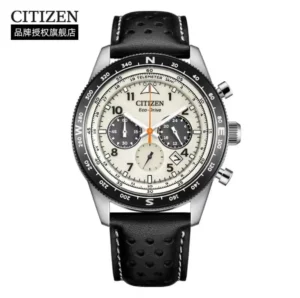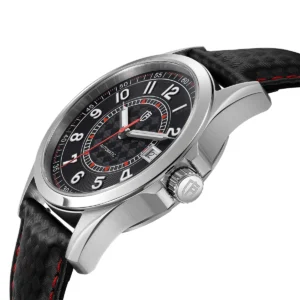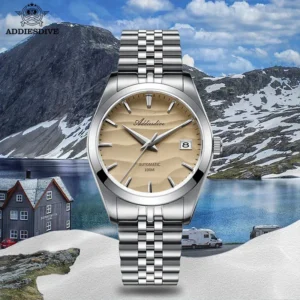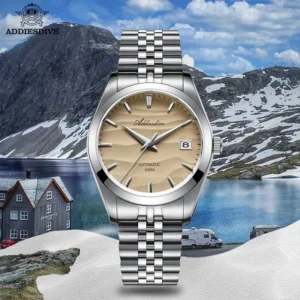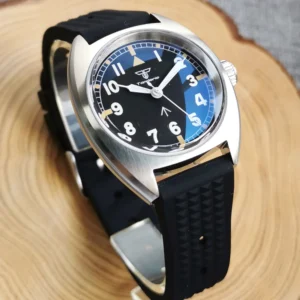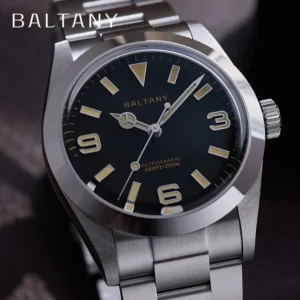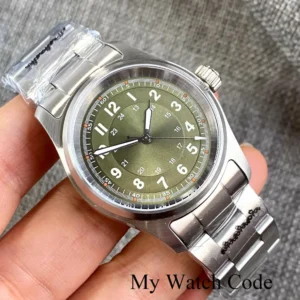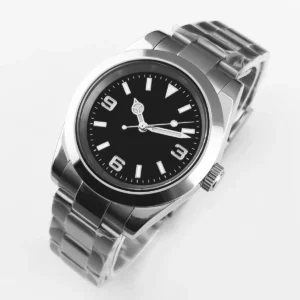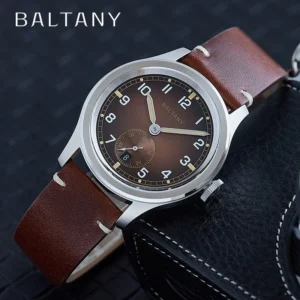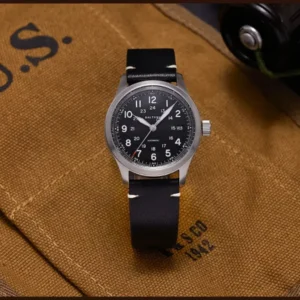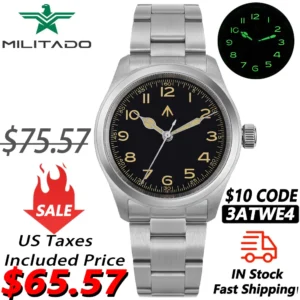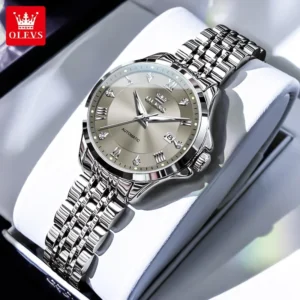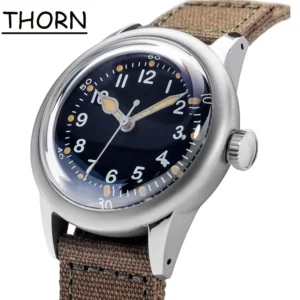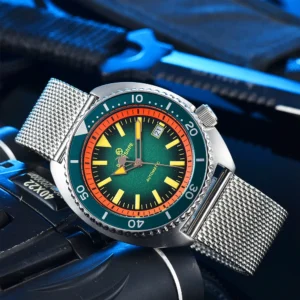Classic Field Watches
Need a watch you can count on? Classic field watches offer military-inspired toughness and clear dials for everyday adventures. Built to last, ready for anything.
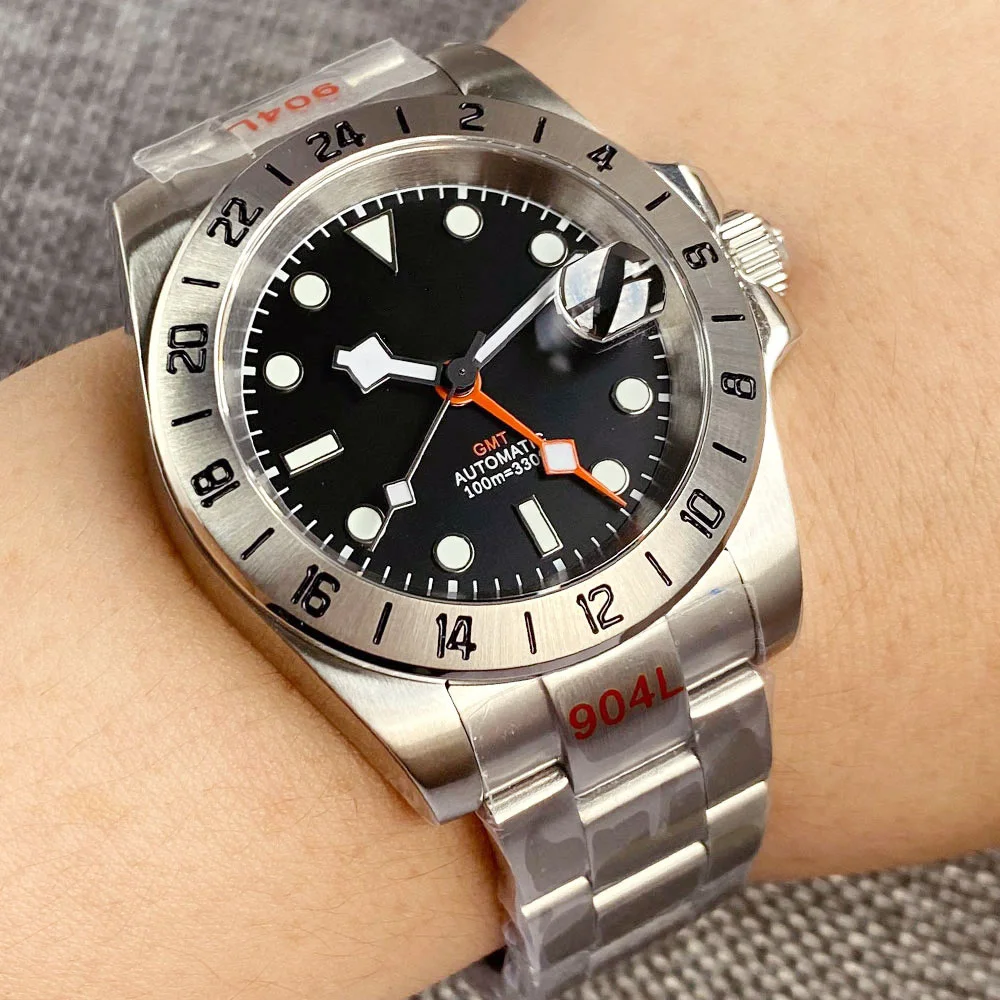
Showing 1–12 of 24 results
Classic Automatic Dress Watches, Classic Field Watches, Military Inspired Automatic Watches
Price range: $181.88 through $182.00 Select options This product has multiple variants. The options may be chosen on the product pageClassic Automatic Dress Watches, Classic Field Watches, Day Date Automatic Watches
Price range: $687.68 through $690.37 Select options This product has multiple variants. The options may be chosen on the product pageClassic Field Watches, Day Date Automatic Watches, Military Inspired Automatic Watches
Price range: $503.74 through $509.90 Select options This product has multiple variants. The options may be chosen on the product pageClassic Field Watches, Classic Style Dive Watches, Professional Spec Dive Watches
Price range: $486.57 through $489.16 Select options This product has multiple variants. The options may be chosen on the product pageClassic Field Watches, Classic Pilot Watches, Professional Spec Dive Watches
Price range: $361.75 through $363.19 Select options This product has multiple variants. The options may be chosen on the product pageClassic Field Watches, Military Inspired Automatic Watches, Titanium Automatic Watches
Price range: $748.00 through $1,297.78 Select options This product has multiple variants. The options may be chosen on the product pageClassic Field Watches, GMT Automatic Watches, Rugged Automatic Watches
Price range: $393.64 through $404.30 Select options This product has multiple variants. The options may be chosen on the product pageClassic Field Watches, Classic Pilot Watches, Military Inspired Automatic Watches, Professional Spec Dive Watches
Price range: $244.20 through $277.50 Select options This product has multiple variants. The options may be chosen on the product pageClassic Field Watches, Day Date Automatic Watches, Rugged Automatic Watches
Price range: $257.08 through $263.74 Select options This product has multiple variants. The options may be chosen on the product pageClassic Field Watches, Day Date Automatic Watches, Military Inspired Automatic Watches
$470.29 Select options This product has multiple variants. The options may be chosen on the product pageClassic Field Watches, Day Date Automatic Watches, Military Inspired Automatic Watches
Price range: $762.45 through $925.34 Select options This product has multiple variants. The options may be chosen on the product pageClassic Field Watches, Military Inspired Automatic Watches
Price range: $280.87 through $338.51 Select options This product has multiple variants. The options may be chosen on the product page
Showing 1–12 of 24 results
Classic Field Watches: Timeless Military Heritage Meets Modern Utility
The Heritage of Field Watches: From Battlefield to Everyday Icon
The humble field watch traces its origins to the early 20th century when military necessity transformed timekeeping forever. As World War I raged, pocket watches proved impractical in combat, giving rise to the first “trench watches” – wristwatches built for battlefield conditions. These early timepieces emphasized legibility and durability above all else.
During World War II, field watches evolved further with standardized specifications like the A-11, featuring large, contrasting numerals and luminous markings for nighttime visibility. These military-issued timepieces set the blueprint for what we now recognize as the classic field watch.
After the wars, these rugged timepieces transitioned to civilian life, retaining their utilitarian design while becoming fashion statements. The field watch’s journey from military equipment to everyday icon speaks to its timeless design and enduring functionality – qualities that continue to define Sharp Aspect’s collection today.
Essential Features That Define a Classic Field Watch
What makes a field watch instantly recognizable? Several key elements have remained consistent throughout their evolution:
- Legibility: Large Arabic numerals (often in a high-contrast 12/24 hour format) ensure quick time reading in any condition
- Luminosity: Hands and markers treated with luminous material (originally radium, now safer compounds like Super-LumiNova) for nighttime visibility
- Durability: Robust cases typically crafted from stainless steel, though modern versions may use titanium or bronze for enhanced resistance
- Crystal Protection: Originally acrylic, most quality field watches now feature mineral or sapphire crystal for superior scratch resistance
- Water Resistance: Ratings typically from 50m to 100m, providing protection from rain and brief immersion
- Movement Options: From affordable quartz to heritage-inspired mechanical and convenient automatic movements
- Practical Straps: Canvas, nylon NATO, or leather straps designed for comfort and durability in varying conditions
These defining features highlight what to look for when browsing our collection – watches that balance historical authenticity with modern reliability for everyday adventures.
Why Field Watches Endure: Versatility & Timeless Appeal
The enduring popularity of field watches stems from their remarkable versatility. These timepieces effortlessly transition from hiking trails to office meetings without missing a beat. Their understated sophistication avoids flashy trends in favor of clean, functional design that remains relevant decade after decade.
Field watches excel in various settings because they balance form and function like few other styles can. The same features that made them reliable in military service – exceptional readability, sturdy construction, and comfortable wear – make them ideal companions for contemporary life.
The field watch’s greatest strength may be its resistance to fashion obsolescence. While other watch styles come and go with changing trends, the field watch’s design language speaks to permanence and utility – qualities that attract those who value timeless style over seasonal fads.
Movement Matters: Understanding the Heart of Your Field Watch
At the core of every field watch beats its movement – the mechanism that powers its timekeeping. Your choice here significantly impacts both price and ownership experience:
Mechanical Movements: Hand-wound movements connect you directly to watchmaking heritage. Each daily winding ritual creates a personal bond with your timepiece. These movements feature intricate gears and springs working in harmony without requiring batteries. While slightly less accurate than modern alternatives, they offer unmatched character.
Automatic Movements: Self-winding mechanisms harness your natural wrist motion to power the watch. They combine the craftsmanship of mechanical movements with modern convenience – no daily winding required. Power reserves typically range from 40-80 hours, indicating how long the watch runs when not worn.
Quartz Movements: Battery-powered quartz offers superior accuracy (typically +/-15 seconds per month) and requires minimal maintenance beyond battery changes every few years. They represent the most affordable and hassle-free option while sacrificing some of the horological charm.
Understanding these differences helps explain why two visually similar field watches might have vastly different price points.
Sizing Guide: Finding the Perfect Field Watch for Your Wrist
Field watches traditionally featured modest case sizes around 36-38mm, reflecting their origins before the era of oversized watches. Modern interpretations typically range from 38-42mm, balancing historical accuracy with contemporary preferences.
Beyond diameter, consider these crucial measurements:
- Case thickness: Thinner cases (under 12mm) slide easily under shirt cuffs
- Lug-to-lug distance: This measurement (typically 44-50mm) determines how the watch sits across your wrist
- Lug width: Affects strap options (common sizes are 18mm, 20mm, and 22mm)
For smaller wrists (under 6.5 inches/16.5cm), consider watches under 40mm with shorter lug-to-lug measurements. Larger wrists (over 7 inches/17.8cm) can comfortably wear larger cases up to 42mm or more.
Materials & Durability: What Makes Field Watches Last
The longevity of a field watch depends largely on its materials:
Case Materials:
– Stainless steel: The most common choice, offering excellent corrosion resistance and durability at reasonable cost
– Titanium: Approximately 40% lighter than steel with superior strength and hypoallergenic properties
– Bronze: Develops a unique patina over time, telling the story of your adventures
Crystal Options:
– Sapphire: Nearly scratch-proof with a hardness of 9 on the Mohs scale (diamond is 10)
– Mineral: More scratch-resistant than acrylic but less than sapphire; a cost-effective middle ground
– Acrylic: Less scratch-resistant but more shatter-resistant and easily polished
Strap Materials:
– NATO/nylon: Lightweight, quick-drying, and easily replaceable
– Leather: Ages beautifully but requires more care in wet conditions
– Canvas: Rugged and breathable with military heritage
Sharp Aspect carefully selects materials that honor the field watch tradition while ensuring modern durability standards.
Style Guide: Pairing Your Field Watch with Different Attire
Despite their utilitarian origins, field watches demonstrate remarkable styling versatility. Their clean lines and understated design complement a wide range of outfits:
- With jeans and a t-shirt, a field watch on a canvas strap enhances casual authenticity
- Paired with chinos and an oxford shirt, the same watch projects relaxed confidence
- Even business casual attire works well, especially when the field watch features a leather strap
One of the field watch’s greatest advantages is easy strap interchangeability. Swapping between leather, canvas, and NATO straps transforms the watch’s character to match different settings and seasons. Earth-tone dials (green, brown, black) pair naturally with outdoor gear, while cream or white dials transition more seamlessly to office environments.
Field Watches vs. Other Tool Watch Styles: What Sets Them Apart
Field watches occupy a distinct niche in the tool watch landscape:
Compared to dive watches, field watches feature more modest cases without rotating bezels, focusing instead on dial legibility over specialized timing features. While dive watches emphasize water resistance (typically 200m+), field watches prioritize versatility across environments.
Unlike pilot watches which often feature busier dials with slide rules or chronograph functions, field watches embrace minimalist legibility with cleaner layouts optimized for quick time-reading.
In contrast to dress watches, field watches favor practical durability over slim elegance, though they maintain a versatility that allows them to cross between casual and semi-formal settings more easily than specialized sport watches.
This balanced positioning makes field watches ideal for those seeking one versatile timepiece rather than a specialized collection.
Finding Your Perfect Field Watch: Key Considerations
When exploring our collection, keep these factors in mind:
- Budget alignment: Quality field watches exist at various price points, with movement type being the primary cost factor
- Heritage vs. innovation: Consider whether authentic vintage styling or modern interpretations better suit your taste
- Size comfort: Try watches similar to your preferred size before purchasing
- Activity matching: Assess your typical environments – more active lifestyles may warrant higher water resistance ratings
- Maintenance preferences: Mechanical movements require periodic servicing, while quartz offers lower maintenance
Ask yourself: “Will this watch work for most of my daily activities?” The best field watch is one versatile enough to wear daily without concern, capturing the true essence of the category.

